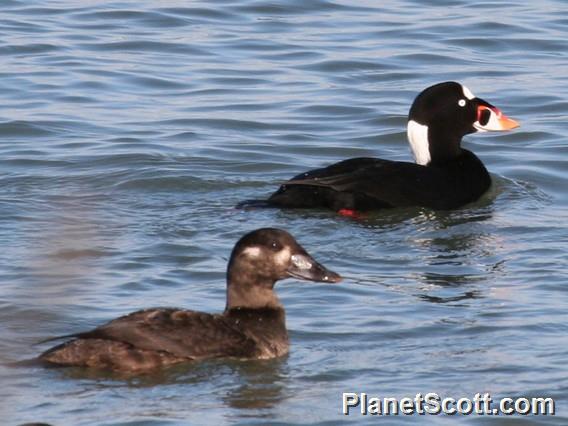Surf Scoter (Melanitta perspicillata)

Surf Scoter (Melanitta perspicillata)
×


Surf Scoter (Melanitta perspicillata)
About Surf Scoter (Melanitta perspicillata)
- Kingdom: Animals
- Phylum: Chordates
- Class: Birds
- Order: Anseriformes
- Family: Swans, Geese, and Ducks
The surf scoter is a large sea duck native to North America. Adult males are almost entirely black with characteristic white patches on the forehead and the nape and adult females are slightly smaller and browner. Surf scoters breed in Northern Canada and Alaska and winter along the Pacific and Atlantic coasts of North America. Those diving ducks mainly feed on benthic invertebrates, mussels representing an important part of their diet.
Source: Wikipedia
Visits
-
2005-12-02
Candlestick Park, United States of America -
2007-01-10
Heron's Head Park, United States of America -
2008-01-17
Giants Park, United States of America -
2010-01-04
Fort Funston, United States of America -
2010-06-08
Denali State Park, United States of America -
2012-08-12
Coyote Point County Park--harbor and marsh, United States of America -
2013-03-23
Coyote Point County Park--harbor and marsh, United States of America -
2013-12-01
Heron's Head Park, United States of America -
2014-01-01
Heron's Head Park, United States of America -
2014-03-22
Baker Beach, United States of America -
2014-05-26
Heron's Head Park, United States of America -
2014-11-18
Fort Funston, United States of America -
2014-12-07
Sutro Heights--Baths / Land's End, United States of America -
2014-12-26
Ocean Beach, United States of America -
2014-12-26
Sutro Heights--Baths / Land's End, United States of America -
2015-01-01
Candlestick Park, United States of America -
2015-01-10
Half Moon Bay - Pillar Point, United States of America -
2015-01-20
Arrowhead Marsh, United States of America -
-
-
-
-
-
-
-
-
-
-
-
-
-
-
-
-
-
-
-
-
-
-
-


